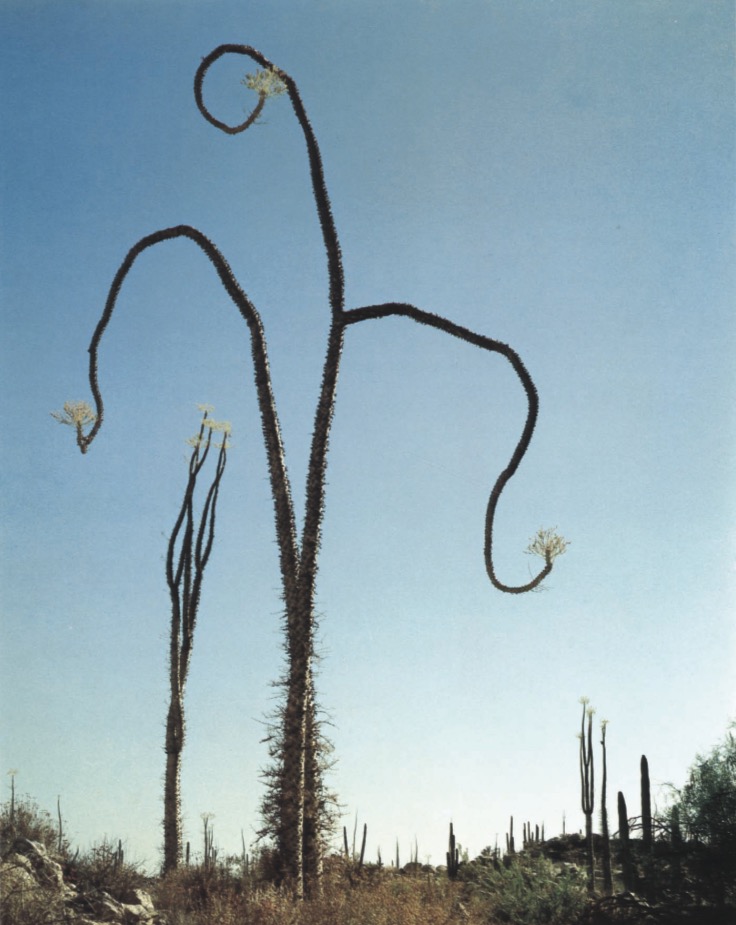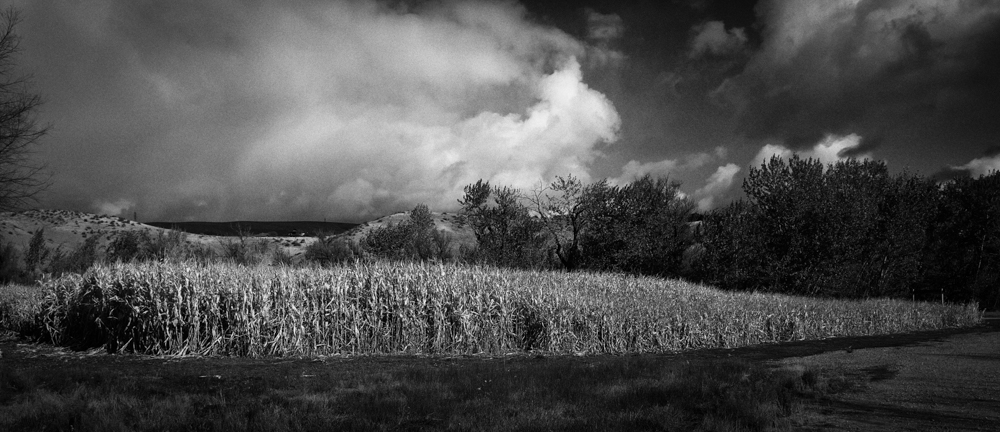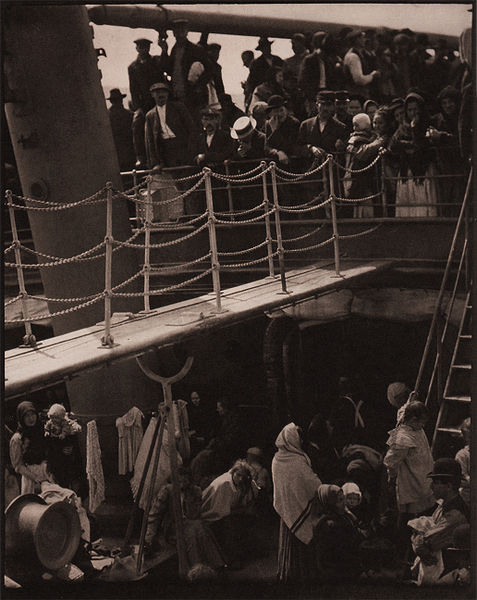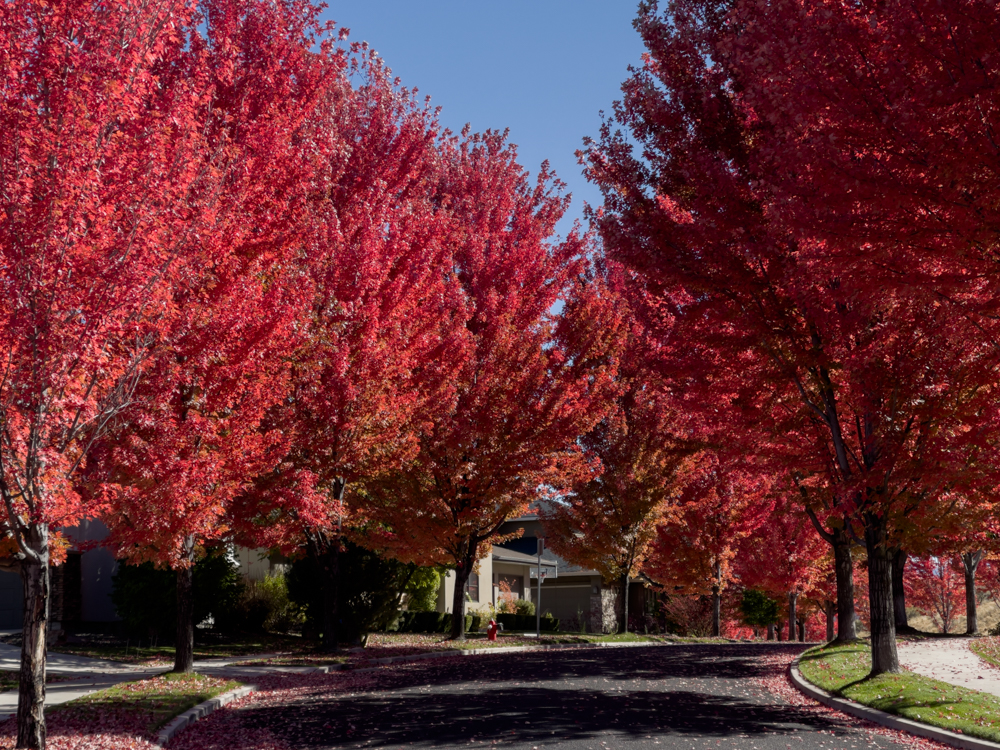Nothing but good news.
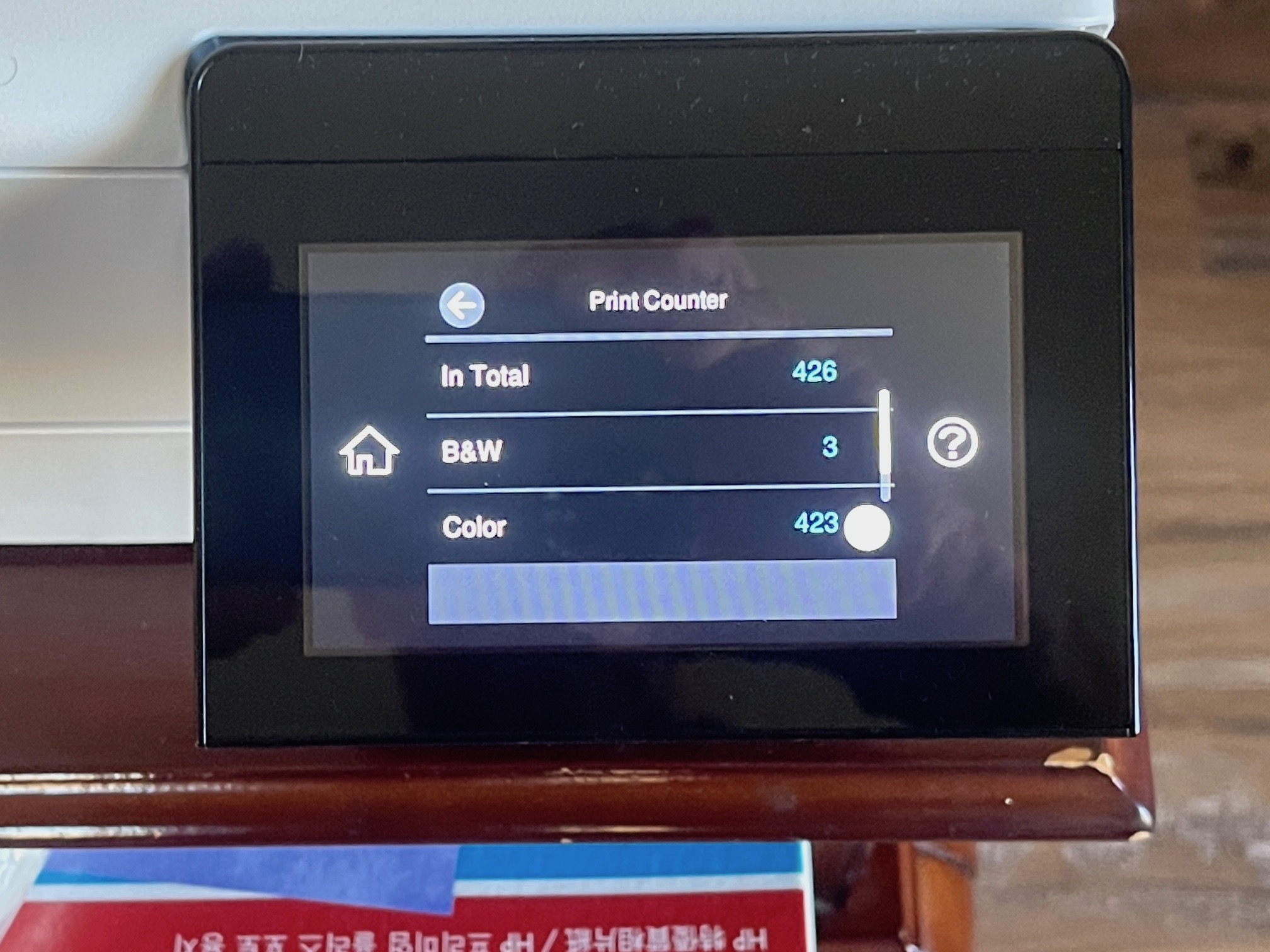
Print count. The fold-out touch screen works well.
For an index of all articles about the Epson ET8550 printer, click here.
Over the past year I have made over 400 13″ x 19″ prints, many exhibited in photo shows, with the Epson 8550 printer. The machine’s small footprint makes finding room for it easy while the maximum print size of 13″ x 19″ is more than good enough for exhibition sized prints. I mat those 18″ x 24″ for a satisfying result. After 400 large prints I have not had to run any of the maintenance utilities – nozzle cleaning, head alignment and so on,
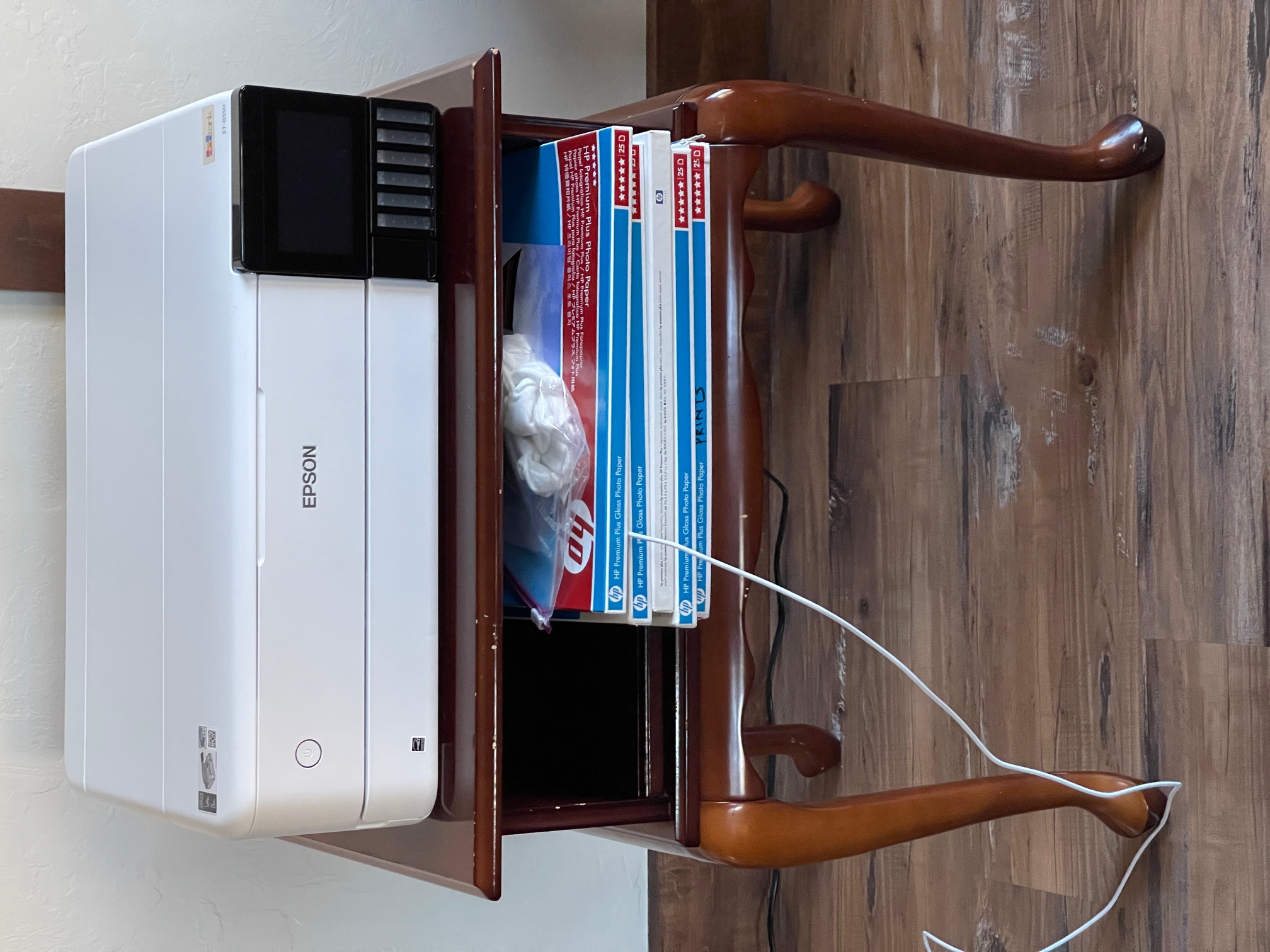
The Epson ET-8550 photo printer in my home office.
As you can see I’m still using up my large supply of HP Premium Glossy dye ink paper, bought from HP when they decided to get out of the dye printer business for ten cents on the dollar, and along with the tailored profile I had made by the fine people at Freestyle Photo in Hollywood I am making good use of those 600+ sheets of paper.
Issues? Really nothing serious. I had one paper jam early on, likely caused by loading too many sheets into the feed tray. I now limit that to no more than ten and the problem has not resurfaced. Ink use remains extremely frugal at 48 cents a large print though the Grey ink is used some three times faster than the four colored dyes. At under $20 a refill bottle it’s far more economical than its predecessor, the HP DesignJet 90.
Regrets? Well, I miss the ability to make 18″ x 24″ prints but Epson does not make an economically priced printer in that size.
My maintenance box is half full so will have to be replaced in a year or so:

Maintenance box replacement.
B&H carries the replacement and it costs $25. It’s a simple drop-in replacement.
Is there an issue with color fidelity with just five ink dyes compared with the ten or more in the large ‘pro’ printers? Not at all. With a properly matched display like the BenQ PD3200Q print-to-screen color matching is well nigh perfect. The ‘experts’ claiming the contrary have no idea what they are talking about.
One quirk, used with my now ancient version of Lightroom (v 6.4) is that LR does not ‘see’ the printer if the printer is turned on after Lightroom is booted, so I have learned to turn on the ET-8550 before firing up Lightroom. No biggie.
In conclusion, if you are looking for a high quality reliable printer and need nothing larger than 13″ x 19″ prints (though the ET-8550 will also do panoramic prints, which I have not tried) the ET-8550 is recommended. If 8″ x 10″ is the most you need the cheaper ET-8500 is what you need. At $100 less that strikes me as a false economy. I paid $629 for the ET-8550 a year ago and I see that the price has now risen to $750. The premium paid at entry is quickly recovered because of the very frugal ink use.
By the way the printer also has a built-in scanner and it works well. Epson constantly updates the printer’s software and I have been sent four updates over the past 12 months.
